 Prebiotics are the best way to get your gut bacteria working properly. There are a lot of food options to get enough prebiotics from your daily diet routine, however, sometimes the lifestyle, or other reasons will make it impossible to have a proper diet; this especially true for those with strict dietary plans. The alternative is to resort to prebiotic supplements.
Prebiotics are the best way to get your gut bacteria working properly. There are a lot of food options to get enough prebiotics from your daily diet routine, however, sometimes the lifestyle, or other reasons will make it impossible to have a proper diet; this especially true for those with strict dietary plans. The alternative is to resort to prebiotic supplements.
The advantage of taking prebiotic supplements is that you can dose it easily, this being particularly useful at the beginning, for people that are not used to larger doses of prebiotics. The supplements allow you to start with small doses, easy to tolerate by your intestines, and slowly grow to normal doses.
Another reason to choose supplements is the convenience. They are easy to take, easy to measure; you don’t have to cook, and to count.
A newly introduced concept in the prebiotic field is the diversity of prebiotic types in your diet. In order to maintain a healthy, well balanced microbial ecosystem, and as diverse as possible, you need to eat all types of prebiotics, from FOS and resistant starch to beta-glucans and pectin. This ensures you feed all the bacteria in your gut, and all strains have their own role in the microbiome, and help your gut with specific tasks.
Why Do We Need Prebiotics
Prebiotics are substances that go undigested through the small intestine and the stomach. Our body doesn’t have the enzymes necessary to break the prebiotics. These carbohydrates get to the large intestine undigested, and they are the food for the colon bacteria, which ferments it and use it to grow. Prebiotics help our microorganism colony thrive; in turn our microbiota helps us stay healthy.
There are two major ways to modify the probiotic composition of your microflora. One way is to take probiotic supplements, or eat fermented foods, which will get you good bacteria from outside. The other way is to feed properly your microbiota, and encourage it to grow and to have a normal activity. The prebiotic way is the best, because it ensures a long term plan. It allows your own bacteria to grow normally, and it promotes biodiversity. The probiotic supplements way works as long as you take them. Once you stop taking them the probiotics will disappear from your body, because they are only transient.
 Prebiotic Types – Which Prebiotics Are the Best?
Prebiotic Types – Which Prebiotics Are the Best?
There is not much research on this, and I usually back my statements with research. There has been a lot of research lately, and there are deep implications of using one prebiotic or another. It looks like various bacteria have their own fiber preferences. That would mean that a controlled prebiotic intake could manipulate the microbiome’s composition.
Which Ones Are the Best for You?
There is enough to suggest that we can selectively use prebiotic s to stimulate certain bacteria. This way we can target specific conditions, and
The latest discoveries point at resistant starch and short chain FOS as the prebiotics with the most stimulation on bacteria that produce butyrate. However, some types of resistant starch, (RS2 more precisely), like raw potato starch, does not feed all kinds of bacteria in our gut. According to this post, in large quantities/prolonged use is even detrimental since it undermines the development of the bifidobacteria. RS2 might have short term health benefits, but you should avoid it on a long term, or taking it in high doses, as some suggest it on the Internet.
Try to get as many types of prebiotic types as possible, this will stimulate as many gut bacteria genera as possible.
Fructans
Fructooligosaccharide
Fructooligosaccharides, (FOS), are a type of dietary fiber and are found in many plants, most often in roots and rhizomes, including onions, leeks, jicama, garlic, and asparagus. FOSs are short chain fructans, and SCF are the most beneficial type of fructans. FOS is also called oligofructose, and it is often combined with inulin to provide a wide spectrum prebiotic.
Inulin
Inulin is a generic term to describe all beta (2-1) linear fructans and a popular fructan-type prebiotics. Chicory is one of the plants with the greatest content of inulin. Many probiotic supplements have inulin added as an ingredient, to ensure a healthy growth of the colony. Chicory coffee is a great folk remedy for many gut problems. Some studies suggest that inulin and inulin type fructans improve the absorption of calcium, and modulate gut Bifidobacterium populations. However, inulin is a FODMAP, and because of that, it should be administrated very carefully.
 Prebiotin Bone Health Supplement
Prebiotin Bone Health Supplement
Prebiotin is an original formula, containing a combo of inulin, wheat bran powder, and psyllium husk. By combining inulin with wheat bran powder, and psyllium husk, we obtain a compounded effect to maintain a regular bowels, without any side effects.
Inulins are known to improve cholesterol and triglycerides, and to stimulate the growth of Lactobacilli and Bifidobacteria cultures.
The ingredients are 100% from natural sources. Prebiotics can be helpful in the treatment of IBS, ulcerative colitis, Crohn’s disease, and many other health issues. However, you still need to be very careful, especially if you have an unbalance microbiome.
Prebiotin has another product: Prebiotin Prebiotic Weight Management. This one contains only oligofructose enriched inulin, and it’s a great choice if you are getting enough insoluble fiber in your diet.
Mannan Oligosaccharides
Although Mannan Oligosaccharides, (MOS), are not prebiotics, they have a major contribution to the health of the gut. As a simple explanation, MOS can be used to trick pathogens, such as salmonella, to bind to them instead of binding to the gut. This way the pathogens are excreted easily. The most notable natural source of MOS, is the brewer’s yeast. There are many studies that prove that MOS can be used successfully instead of antibiotics, to treat or prevent certain pathogens. Note that brewer’s yeast is also a great source of beta-glucans, another prebiotic.
Resistant Starch
Resistant starch got a lot of attention lately, and it is a powerful prebiotic. Although the mainstream medical practice did not pick it up yet, there is a lot of evidence that resistant starches are a great prebiotic, although the initial side effects are discouraging for many people. Resistant starches are still new as prebiotic, hence you won’t find any supplements based on them. The good news is that they are extremely cheap to to get and easy to get from foods. Most notable conventional sources are white beans, roasted potatoes, chestnuts, and many others. Here is Wikipedia’s article about them, and I will write soon a comprehensive article on resistant starch foods.
 LiveKuna Plantain Flour
LiveKuna Plantain Flour
Raw plantain flour is a great source of resistant starch. While this is not a supplement, it’s a great prebiotic to add to your diet. Many people do not tolerate green banana flour, but they love plantain flour. This is probably the best source of RS2 type resistant starch. Starch from raw potato is easier to dose than this flour, and people love it for its lucid dreams inducing capabilities, but plantain flour is safer to use, and better.
A great benefit of this product is that it causes less gastrointestinal discomfort than other resistant starches. I also love the texture of it in my smoothie.
No other additive in the flour, just pure plantains. The best thing is you can use this for baking, and it’s great in any gluten free recipe, or even…
Galacto oligosaccharides
Galacto oligosaccharides, (GOS), are naturally found in breast milk, and in a much lower concentration in cow’s milk. Galacto oligosaccharides are one of the best sources of food for our gut flora, with most stimulation achieved for Lactobacilli and Bifidobacteria. Cow’s milk GOS concentration is higher in early milk, and lower in mature milk.
Beta Glucans
Beta-glucans are polysaccharides known for being an effective immunity activator, and to reduce cholesterol. There are many other health benefits associated with beta-glucans, however, the prebiotic effect was only in the latest years discussed and researched. Much of the health benefits of the beta-glucans might stem from its prebiotic activity. Here is a scientific discussion about the prebiotic properties of beta-glucans. Natural sources of beta-glucans are brewer’s yeast, some mushrooms like shiitake, reishi, or maitake, and the bran of certain grains, such as oats and barley.
 Klaire Labs Galactomune Powder – Prebiotic Beta-Glucans
Klaire Labs Galactomune Powder – Prebiotic Beta-Glucans
This product from Klaire Labs combines two prebiotics for a synergistic effect on gut microbiota. The blend contains galactooligosaccharides and beta-glucan, a prommising prebiotic blend. Galactooligosaccharides is a fibre commonly found in breast milk, and in lower quantities even in early cow’s milk, and it is a great prebiotic, selectively feeding good bacteria. Beta-glucan is a polysaccharide with prebiotic activity and a great ability to modulate immune system.
Galactooligosaccharides, like amost fibre types can create gastrointestinal discomfort, such as gas, and abdominal pain. However, ocompared to inulin, the side effects are much lower.
Lactulose
Lactulose is a synthetic sugar, and it is not found in natural foods. Although not considered as a dietary fiber, it holds many of the benefits associated with fiber. The most notable applications of lactulose are the treatment of constipation, and promoting the growth of good bacteria.
Arabinogalactan
Arabinogalactans are relatively new as prebiotics. The most famous product containing arabinogalactan is acacia gum, which is used by many for its IBS symptoms reducing. Another great source of arabinogalactan is larch, and there are a few products on the market containing larch extract.
 Swanson Fiberaid Larch Tree Arabinogalactan
Swanson Fiberaid Larch Tree Arabinogalactan
Larch tree exctract, arabinogalactan, is one of the best prebiotic fibers. One of the reasons is because it selectively feeds the good bacteria, while maintaining a great digestive tolerance. Unlike most of the prebiotics, larch extract will not give you painful gas problems.
FiberAid from Swanson is completely soluble in liquid, and can’t even notice it in your coffee, tea, or smoothie.
Prebiotics for Reprograming the Microbiome
It’s not very difficult to obtain a healthy microbiome, with a perfect balance between the various members of the ecosystem. The most important is to ensure you get enough prebiotic, and varied. I like to supplement with GOS + betaglucans, Inulin + FOS, (oligofructose enriched inulin), and resistant starch.
My blend is this: 1 or 2 TBS oligofructose enriched inulin, 1-3 TSP green banana flour, (or raw potato starch), 1 TBS Acacia gum, (gum arabic from acacia Senegal).
If you don’t get enough soluble fiber from your food, you can slightly increase your dose. Make sure this is not causing too much intestinal discomfort. You should start with half, or third of the above dose, in order to avoid painful abdominal discomfort. In time your tolerance will increase, and you can increase the dose.
There are a lot of other potential prebiotics, but there is not enough evidence to determine a true prebiotic effect. Here is a comprehensive list with various potential prebiotics, and the results of the research: Dietary modulation of the human colonic microbiota.
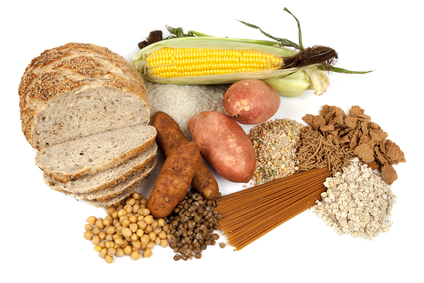
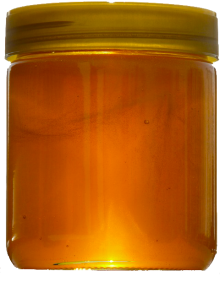 Prebiotic Types – Which Prebiotics Are the Best?
Prebiotic Types – Which Prebiotics Are the Best?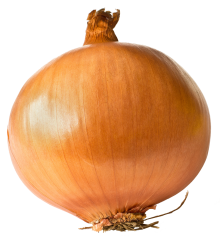
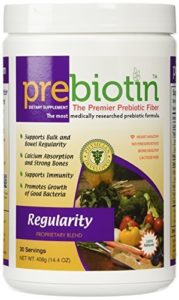
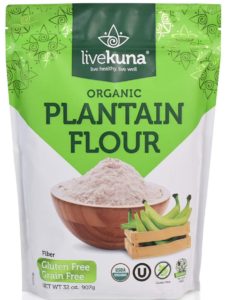
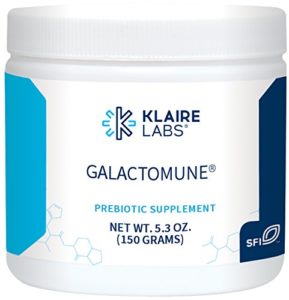
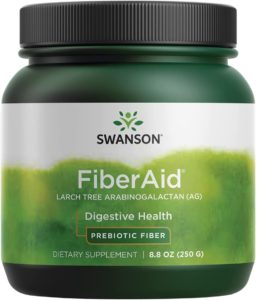
1 thought on “Prebiotic Supplements – Soluble Fiber, Resistant Starch, Beta-Glucan”